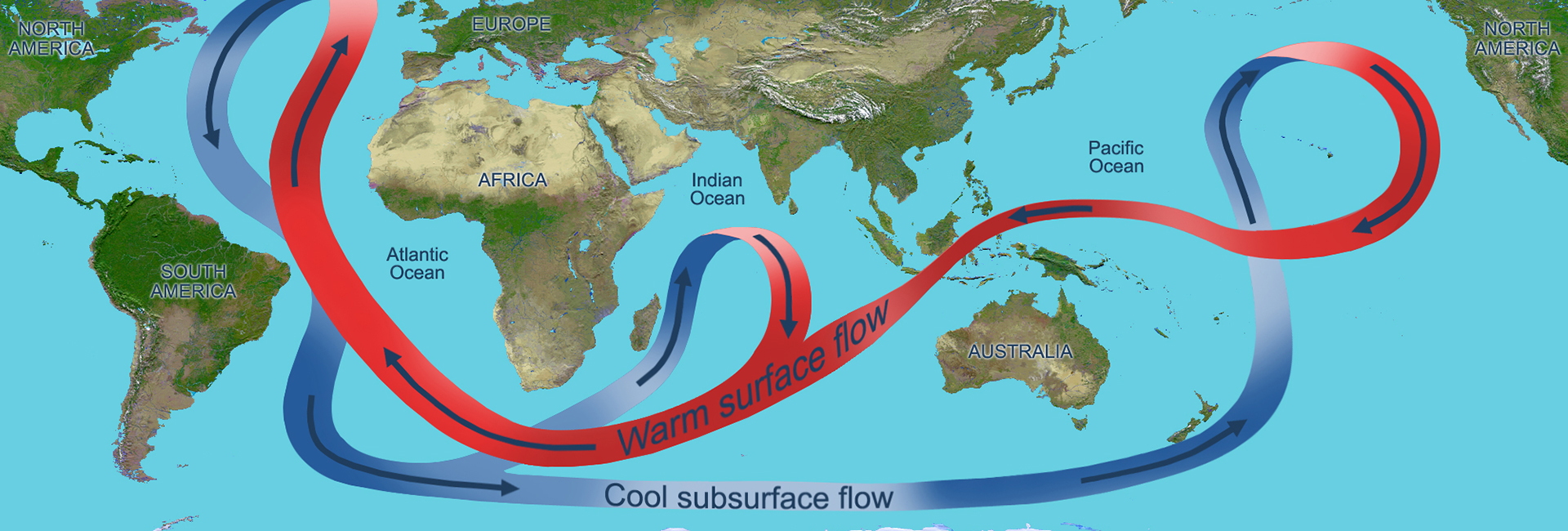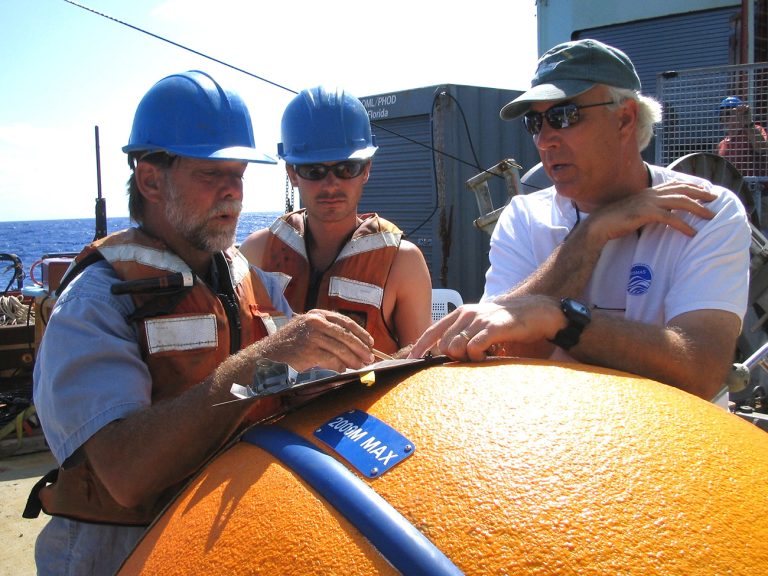

Rosenstiel researchers are finding new insights into the ocean’s conveyer belt and its impact on climate.
Long an interest of oceanographers and atmospheric scientists, the Atlantic Meridional Overturning Circulation (AMOC) was thrust into the public eye in 2004 by a disaster movie depicting the sudden onset of another ice age when the ocean’s great heat-moving conveyer belt ground to a halt.
The timing was coincidental, but shortly after The Day After Tomorrow debuted in theaters, the University of Miami’s William Johns and scientists from the United Kingdom kicked off the first continuous study of the AMOC’s strength and structure.
Known as RAPID-MOCHA, the U.K.’s Rapid Climate Change and the U.S.-funded Meridional Overturning Circulation and Heatflux Array programs have since confirmed that the large-scale overturning circulation is indeed weakening and may continue to do so—with potentially grave consequences for the global climate.
After all, the AMOC gets its name because its surface waters transport enormous amounts of nutrients, fresh water, and heat—enough to provide the United Kingdom 20,000 times the power it consumes in peak wintertime—from the tropics to northern latitudes.
About the Photo
lllustration depicting the overturning circulation of the global ocean. Photo credit: NASA.
Join the Conversation
Follow the Twitter:
Rosenstiel School, @UMiamiRSMAS
University
of Miami, @univmiami
UM
News, @univmiaminews
There, the heat is released into the atmosphere and carried easterly by westerly winds, and the surface waters cool, growing denser and sinking to the ocean depths, where they turn over and return south.
“If it weren’t for that,” says Johns, professor of ocean sciences at the Rosenstiel School of Marine and Atmospheric Science, “our climate in the north and in Europe would be much colder.”
Yet, until 2004, when Johns and his U.K. collaborators at the National Oceanography Centre deployed and began monitoring a series of moored current meters and temperature sensors on the Atlantic’s 26.5°N parallel, from the Bahamas to Morocco, the understanding of the AMOC was based on sparse ship-based observations. Known as the RAPID-MOCHA array, many of the moorings were designed by members of the Rosenstiel School’s ocean technology group, who anchored the high-tech buoys with old railroad wheels.
With more than a dozen years worth of observations from those moorings, Johns and his collaborators have confirmed a statistically significant decline in the AMOC’s heat transport—much more than predicted by computer models—but they haven’t answered the question posed by The Day After Tomorrow: What does it mean?
 “It could be part of natural oscillation, or it could be a longer-term
general decline associated with man-induced climate change,” Johns says. “For now, 12 years
is just too short a time to say.”
“It could be part of natural oscillation, or it could be a longer-term
general decline associated with man-induced climate change,” Johns says. “For now, 12 years
is just too short a time to say.”
It was enough time, though, to provide some surprising insights into the AMOC’s year-to-year variability, which Johns notes, is much greater than previously expected from the ship-based observations. As it turns out, the AMOC has a marked seasonal cycle, with big differences between the minimum heat transport in the spring and the minimum transport in the fall.
“We are trying to understand the physics of the variability. Is it changing because of wind forcing?’’ says Johns. “Or is it something else? Is there a man-made element? Like everybody trying to understand how the ocean and atmosphere interact, we are faced with the problem of trying to understand both natural variability and human-induced climate change.’’
- Maya Bell / UM News
